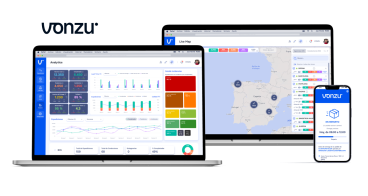Belgium-Brussels Capital Region: Transport of goods and services within low traf
Background
Challenge
How might we facilitate the transport of goods and services within low traffic neighbourhoods efficiently?
Context
The new strategic Brussels Capital Region 2020 mobility plan, “Good Move,” introduced the implementation of Low Traffic Neighbourhoods (LTNs), a central measure that has sparked both positive and negative reactions.. The region has been divided into 50 different neighbourhoods where through traffic is discouraged and confined to the main axes, encouraging walking and micro-mobility within the LTN (see image below). The aim is to improve residents’ quality of life, road safety, and reduce car dependence in the city.
Currently, the implementation of LTNs has been slowed down because of low public acceptance due to limited circulation and frustration with changes to traffic. The challenge is to provide a solution for logistics providers to maintain operational efficiency in LTNs, while fostering public support and optimisation of the LTNs.
Limited access in low-traffic zones disrupts traditional delivery routes, significantly reducing the efficiency of van and truck operations as measured by stops per hour. This requires solutions for carriers to make deliveries more efficient within these neighbourhoods. By supporting inner-city logistics to adapt to low-traffic neighbourhoods, the Brussels Capital Region aims to demonstrate that these zones can encourage more efficient delivery models than currently exist, while guaranteeing the same operativity as prior to the implementation of LTN.
The expected solution
This challenge looks for innovative, future-proof solutions that could be easily replicated in all 50 LTNs. The involvement of local shops and logistics companies as end-users will be key factor in the success of the pilot. The solution provided should be affordable, to ensure scaling upon success of the pilot. The Brussels Capital Region is open to a wide variety of solutions that could enhance logistics in LTNs, while tackling issues of public support.
The goal is to propose a solution that would work within the currently established LTN framework, to optimise the functioning and support of the LTNs without hindering their implementation. Therefore, solutions should not include exemptions to the current LTN policy but should ensure applicability and affordability for the public administration. Examples could include digital tools such as routing solutions that integrate the logistics transport traffic information and the LTNs requirements, or infrastructure solutions like mobile logistics hubs or smart signalling systems for transporters. Supporting green urban logistics will not only benefit the local economy but also improve perception of LTNs.
Nice-to-haves:
- Demonstrate that operations are more efficient (in terms of stops per hour) in a district after it has been transformed in a low traffic neighbourhood.
- Introduce a modal shift from motorised vehicles for the movement of freight and services
- Support the development of new circulation plans integrating the needs from retailers and transporters.
Published 4 March, 2024.






